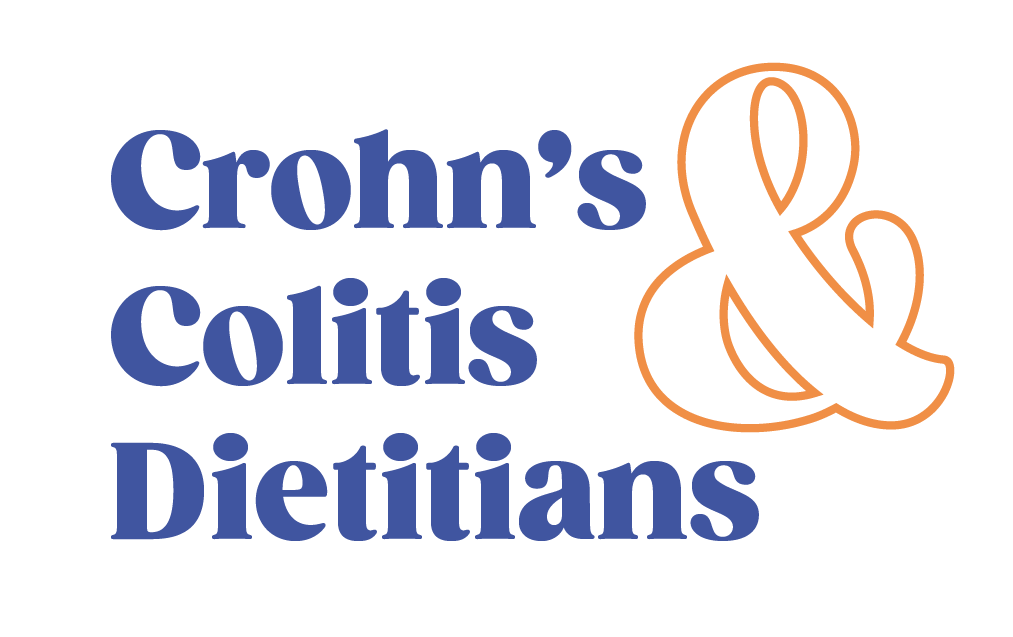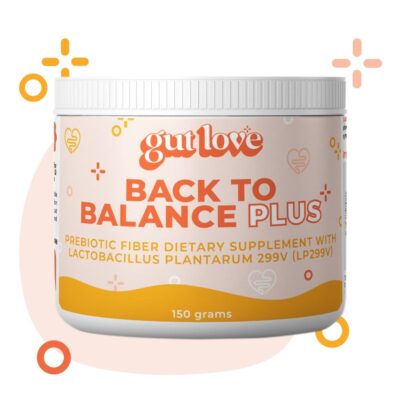Crohn’s disease is one of the conditions that those with Inflammatory Bowel Disease (IBD) suffer from. According to the Centers for Disease Control, the prevalence of IBD is estimated at 1.3% (3 million) of US adults.
Crohn’s disease usually affects the ileum and colon, but can affect any area of the intestinal tract, from the mouth to the anus. Inflammation typically exists throughout the entire organ in Crohn’s Disease, rather than in patches like Ulcerative Colitis.
Nutrition strategies for Crohn’s Disease are similar to Ulcerative Colitis. For more information about nutrition strategies for Ulcerative Colitis, refer to our latest article here.
This feature aims to provide helpful information on what foods to eat for Crohn’s disease, why those foods would be of benefit, and some foods you might consider avoiding.
Crohn’s Friendly Foods: What Should I Eat
Before we discuss nutrition strategies for Crohn’s Disease, let’s consider the differences between Crohn’s Disease and Ulcerative Colitis and some signs and symptoms of Crohn’s Disease.
Risk factors, signs and symptoms of Crohn’s Disease
Crohn’s Disease is thought to result from an inappropriate inflammatory response to intestinal bacteria, where the immune system attacks the body’s healthy cells.
When the bacteria mistakenly trigger the immune system, inflammation ensues causing symptoms of Crohn’s. Inflammation from Crohn’s Disease can also cause other issues like narrowing of the colon and abnormal connections between organs or surfaces.
Similar to Ulcerative Colitis (UC), Crohn’s Disease is an idiopathic inflammatory condition marked by seasons of remission and flare.
There are several risk factors associated with Crohn’s Disease, including:
- Family history – if you have a close relative with Crohn’s Disease, you are at higher risk of developing the disease yourself
- Smoking – smoking may double your risk of developing Crohn’s
- Certain medications – medications such as NSAIDs like aspirin or ibuprofen may increase your risk
- A high-fat diet – a high-fat diet, particularly a high animal fat diet may slightly increase your risk
Signs and symptoms of Crohn’s Disease
The most common signs and symptoms of Crohn’s Disease include diarrhea, cramping, and abdominal pain, and weight loss. Others include:
- Chronic diarrhea
- Fever
- Rectal bleeding
- Eye Inflammation
- Failure to grow in children
- Arthritis or joint pain
- Pallor (paleness)
- Cachexia (disease-related wasting)
- Nausea or loss of appetite
Although there is no cure for Crohn’s Disease, having a nutrition strategy can help reduce overall inflammation, increase tolerance to foods, and reduce the risk of Crohn’s flare.
A specialized IBD dietitian can help provide a nutrition prescription that fits into your lifestyle and helps you manage your disease.
What to eat with Crohn’s
In recent years, the use of nutrition therapy for IBD has significantly grown in interest. This is due to the fact that food is both a risk factor and a therapeutic option in IBD. Diet is a powerful tool alone and when used in conjunction with medical interventions.
Here at the Crohn’s and Colitis Dietitians, we focus on:
- Choosing foods that will help reduce inflammation and risk of flare
- Choosing foods that will easily fit into your lifestyle and increase the quality of life
Before addressing foods for Crohn’s, it’s important to remember that the foods that trigger symptoms don’t always trigger inflammation.
As well as the opposite, an inflammatory diet pattern doesn’t always immediately result in symptoms. It may be helpful to review our previous article, the 4 types of remission.
Similar to UC, the best type of diet pattern for Crohn’s is a plant-based diet that’s rich in omega 3-fatty acids and fruits and vegetables. Discussed below are some foods that are helpful for people with Crohn’s Disease.
Crohn’s Friendly Foods
A healthy diet can look different for everyone, and with the Crohn’s and Colitis Dietitians, we help come up with an individualized plan for you. Whole foods are prioritized more often then processed foods, as well as some great options below to emphasize an anti-inflammatory meal pattern.
Omega 3 Fatty Acids
Omega 3 fatty acids have known anti-inflammatory properties that can help reduce inflammation in Crohn’s disease.
Increasing Omega 3 fatty acids in the diet increase the cell membrane content of these fatty acids, resulting in higher concentrations of inflammatory mediators ultimately reducing inflammation.
Omega 3 fatty acids are rich in foods like fatty fish (salmon, tuna, trout), walnuts, and seeds like chia and flax.
https://www.ncbi.nlm.nih.gov/labs/pmc/articles/PMC4700845/
https://pubmed.ncbi.nlm.nih.gov/12480795/
Nut butter
As mentioned above, many of those with Crohn’s Disease lose a considerable amount of weight without trying to.
According to a study in the Journal of Gastroenterology, weight loss is a significant issue in Crohn’s Disease with 57% of subjects experiencing significant weight loss prior to diagnosis.
Including foods like nut butter can be a resourceful and satisfying way to increase caloric intake while also modifying the fiber type.
Oatmeal
Incorporating foods like oats in the form of oatmeal can be a nourishing choice. Oatmeal is rich in soluble fibers.
Soluble fibers can help in increasing beneficial short-chain fatty acids and enhancing stool consistency. Oatmeal is especially helpful in times of flare!
Olive Oil
Olive oil is rich in polyphenols, which are fascinating plant compounds known for their health-promoting properties.
One such property is their ability to regulate the human immune system. We suggest forms of olive oil highest in polyphenols, our favorite is cold-pressed extra virgin olive oil.
Antioxidant-rich foods
Incorporating antioxidant-rich foods helps defend against further tissue injury in IBD and disrupts the perpetuation of inflammation in the gut (Lih-Brody et al, 1996, Kruldenier and Verspaget, 2002).
We suggest adding brightly colored berries, leafy greens, and other vegetables like butternut squash to smoothies since it’s an easy and delicious way to incorporate more antioxidants into your diet.
Some of our favorite antioxidants to recommend include:
- Proanthocyanidins – dark grapes, red rice
- Anthocyanins – blueberries, black currants, raspberries, black rice, purple/blue corn
- Chlorophyll – leafy greens, swiss chard, spinach, watercress, lettuce, celery
- Carotenoids – butternut squash, sweet potatoes, tomatoes, peppers
What to eat when in a Flare
While everyone is slightly different in the types of foods they tolerate in a flare, many are surprised by the number of foods they can tolerate when food quality is increased and known inflammatory food triggers are eliminated.
All of the recommendations above are still applicable in a flare, however, we recommend working closely with an IBD specialized dietitian to focus on strategies to decrease inflammation and expand your diet.
We understand that a flare is a really scary place to be in, but we want to encourage you not to over restrict foods. Over restricting foods can lead to poor nutrient status and reduce our body’s ability to repair itself.
Even so, we understand how difficult that actually is – remember, we are both patients and practitioners! Start slow, remind yourself of the importance of sustenance and nourishment, and work your way up.
Creating a list or booklet of flare friendly foods and recipes can be a helpful tool that eliminates anxiety during that time. This list could even be housed digitally for easier access, such as in the notes section of your phone. A few of our favorites that are easier to digest include:
- Green bananas
- Overnight oats
- Beans
- Smoothies
- Roasted root vegetables like butternut squash and sweet potatoes
- Stir Fry
- Roasted salmon with black rice and green beans
Food Diary App for Crohn’s Disease
Have you heard of the term food diary? They are a helpful tool for someone with IBD to determine what foods have the potential to contribute to unwanted symptoms.
It’s important to remember that trigger foods are different for everyone. Common gut irritants include spicy foods, dairy products, caffeine, foods high in fat, foods high in sugar, and sugar alcohols (examples: sorbitol, mannitol, xylitol, and isomalt).
To help keep all your food and symptoms in the same place, consider downloading one of these apps to keep up with your food diary:
- ‘My IBD Manager’ by the American Gastroenterological Association can track it all. It also gives you the opportunity to share your information with your healthcare provider. Common items to track include levels of pain, sleep, food intake, and medications.
- The ‘My Gut’ app was developed by Crohn’s and Colitis Canada. It provides daily check ins to assess gut symptoms, track your food intake, and record bowel habits, as well as anxiety and stress. It also has a section where you can read and watch videos pertaining to the type of inflammatory bowel disease you have.
- ‘Colitis Tracker’ allows you to track any and all symptoms in a calendar format. There is a space to add comments to note things like foods and beverages consumed, and any other things of note.
Other apps that come in handy for those with IBD are restroom trackers like ‘We Can’t Wait’, and the “GoHere Washroom Tracker’ app.
Start your symptom remission today
Fed up of not knowing which foods work for you? Worn out from trying different diets for Crohn’s?
It’s not always easy figuring out how to eat and coming up with a diet plan with inflammatory bowel disease. That’s why we created the IBD program, a group specifically for those with Crohn’s and Colitis to learn about the latest research and find the best nutrition plan for them.
We’ll teach you how to expand your diet, make easy meal plans and more importantly, enjoy food again – all while reducing your IBD symptoms.
Sign up now to join us and achieve, and stay, symptom-free.
Free resources for you:
Want a free e-book on what to eat for IBD? Sign up here.






My partner is recently diagnosed. During this flare he has experienced massive mouth & throat cankers, diarrhea, sleeplessness, not eating etc. Terrible he’s 76. Pretty late in life
I’m so sorry to hear this! I’d love to help though- please reach out to su*****@************************ns.com
Comment *
Comment *
I am diognised severe crons and more than six months having flare and under treatment.
Comment *
I’ve had multiple crohn flares since Covid having everyone home